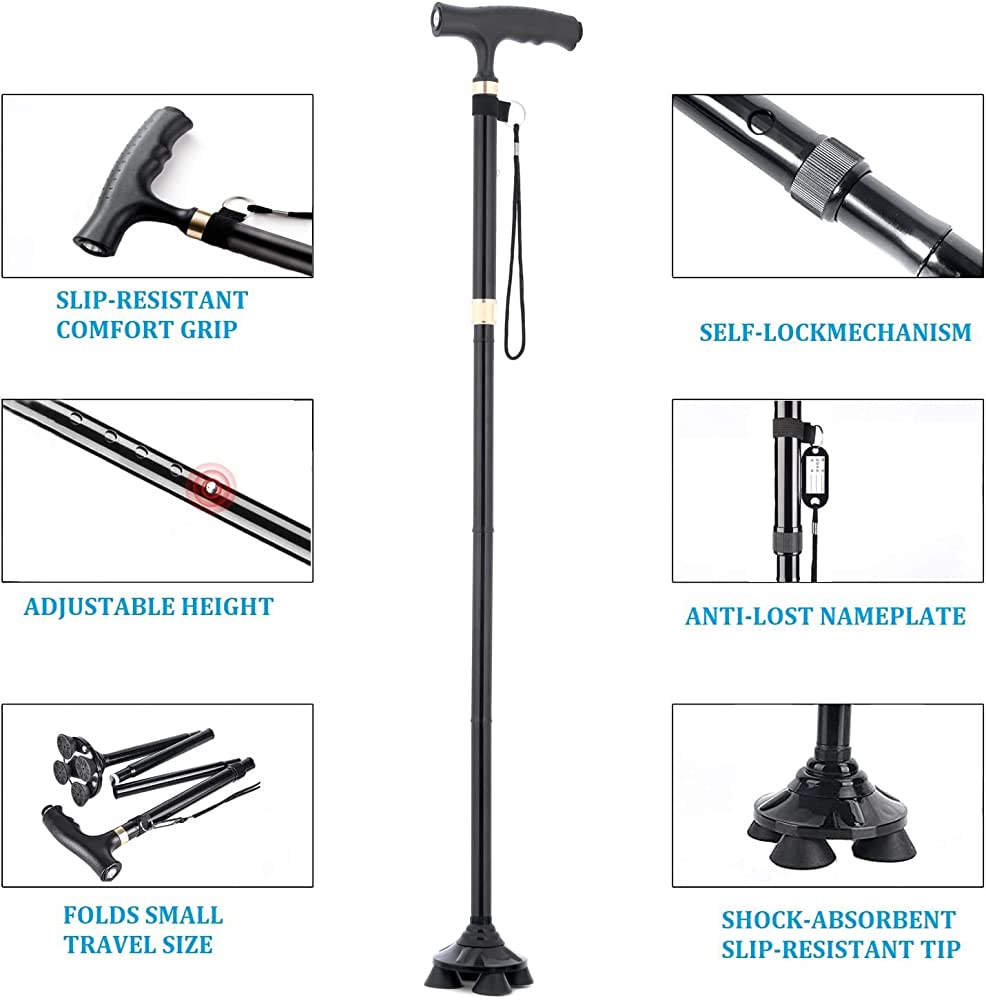How to adjust a walking cane for hiking in case of fatigue or changing terrain?
Adjusting a walking cane for hiking is an important skill that can help hikers maintain proper posture and balance, reduce the risk of injury, and prevent fatigue during long hikes. Here are some tips on how to adjust a walking cane for hiking in case of fatigue or changing terrain
Adjust the height
The height of a walking cane can greatly affect its effectiveness and comfort. When adjusting the height of a walking cane for hiking, the general rule of thumb is that the top of the cane should be at the level of the hip bone when the arm is hanging down at the side. This can provide the best balance and support for hikers. However, when hiking on steep inclines or declines, hikers may need to adjust the height of the walking cane to maintain proper balance and posture. For example, when hiking uphill, hikers may want to shorten the walking cane to provide more support to the upper body. Conversely, when hiking downhill, hikers may want to lengthen the walking cane to provide more support to the lower body.
Adjust the grip
The grip of a walking cane is another important factor to consider when adjusting it for hiking. Walking canes for hiking typically come with different types of grips, such as cushioned grips or ergonomic grips. Hikers can adjust the grip of the walking cane to reduce the strain on their hands and wrists during long hikes. For example, hikers may want to use a cushioned grip to reduce the impact on the hands during long hikes. Conversely, when hiking on rough terrain, hikers may want to use an ergonomic grip to provide better support and control.

Adjust the tip
The tip of a walking cane for hiking can also be adjusted to improve its effectiveness on different types of terrain. Walking canes for hiking typically come with different types of tips, such as rubber tips, carbide tips, or spikes. Hikers can adjust the tip of the walking cane to provide better traction on different types of terrain. For example, when hiking on rocky terrain, hikers may want to use a carbide tip to provide better grip and stability. Conversely, when hiking on soft or muddy terrain, hikers may want to use a wider base or rubber tip to prevent sinking.
Adjust the strap
The strap of a walking cane can also be adjusted to improve its comfort and effectiveness. Walking canes for hiking typically come with adjustable straps that can be tightened or loosened to improve grip and support. Hikers can adjust the strap of the walking cane to reduce fatigue and improve control during long hikes.
Overall, adjusting a walking cane for hiking is an important skill that can help hikers maintain proper posture and balance, reduce the risk of injury, and prevent fatigue during long hikes. By adjusting the height, grip, tip, and strap of the walking cane, hikers can customize their walking cane to fit their individual needs and the changing terrain of the hiking trail. Whether you’re an experienced hiker or just starting out, knowing how to adjust a walking cane for hiking can help you enjoy the great outdoors with greater comfort, confidence, and safety.